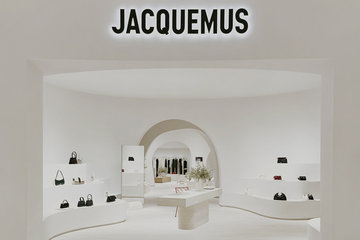
Sayidaty, About Her and Al Jamila’s Editor-in-Chief, Mohammad Al-Harthi
The WAN-IFRA Middle East Conference 2017 took place 13-14 March in Dubai, with the participation of Sheikh Nahyan bin Mubarak Al-Nahyan, the UAE’s Minister of Culture, giving a great opportunity for Sayidaty’s Editor-in-Chief, Mohammad Al-Harthi, to talk about the difficulties facing media companies. Al-Harthi, who was participating in one of the main panel discussions at the event that provides heads of the publishing sector an occasion to discover the latest regional and international major trends and best-practice ideas, made specific references to Saudi Arabia.
“The biggest problem the media industry faces in Saudi Arabia is that media establishments have become used to very high income levels. Even though this provides these companies with many benefits, it has one major disadvantage, it is killing creativity and decreasing interest in new media and how to deal with its variables,” he said. Al-Harthi also pointed out the excitement of wealth and profits have sent these media establishments into a trance that prevents them from seeing the future, saying, “Media companies have not dealt seriously with the industry’s factors; they have dealt with them as if they were entertainment events."
The Editor-in-Chief added the world is moving towards digital media and Saudi media establishments have failed to realise its importance. The majority of these companies have not offered a concrete contribution, except for some websites that simulated the content of newspapers. “They publish the same content and have not brought any added value to the readers or even encourage them to buy the newspaper to read the rest of the story,” Al- Harthi added.

According to the seasoned media personality, the problem started to surface with the current economic circumstances and the decline of sales and advertising budgets. The danger of publications closing has become more of a possibility in 2017 or 2018. Al-Harthi said the reason for this crisis is the absence of creativity in these firms, which have become used to abundance. "These companies are facing difficulties in meeting payments, and they should be held responsible for the blockages, inability to start initiatives and failure to come up with new ideas,” he said. “Newspapers that are very slow in changing are on the periphery, lack daring and creative content and have not invested in the talent that could have made up for this shortage, which reflects the state of journalism.”
Al-Harthi highlighted current laws are incapable of protecting the media in Saudi Arabia, due to the absence of regulations to maintain a publication’s rights. He said daily newspapers suffer from the absence of a publication law and a stagnant culture, with official bodies dealing with it as if it’s natural for websites to steal the content of newspapers.
The Editor-in-Chief objected to the issue of government support, which was suggested by some people. “Despite this, logical solutions are best, because we need to develop ourselves and find other sources of income,” he said. “We should be more creative and recognise how to reach readers and look for suitable investment opportunities.”
Al-Harithi also talked about the way “Sayidaty” is tackling new and future media. “At Sayidaty, we decided to find new income sources, we launched websites and new projects, we invested in the family and women, and we are careful to spend on capitalise on wide-ranging tools,” he said. He confirmed content is the number one priority for “Sayidaty,” and they will “continue to develop the content through the website and the magazine, especially with the increased interest in social media.”
‘Sayidaty’ Swoops Digital Media Award For Snapchat Account

Sayidaty’s Snapchat account won first place in the social media category during WAN-IFRA's Middle East Digital Media Awards 2017, which honours the best innovations and new projects in digital media and mobile strategies across the world.
The Snapchat account, which was launched in November 2016, was a way for “Sayidaty,” a leading women’s magazine in the Arab world, to keep up with the region’s growing interest in the application, especially in Saudi Arabia. According to the statistics, there are 4,410,000 Saudi Snapchat users (13 percent of the total population).

















